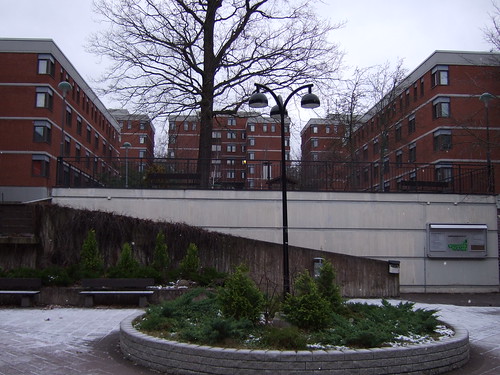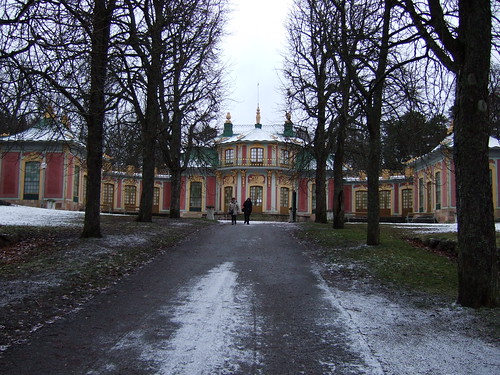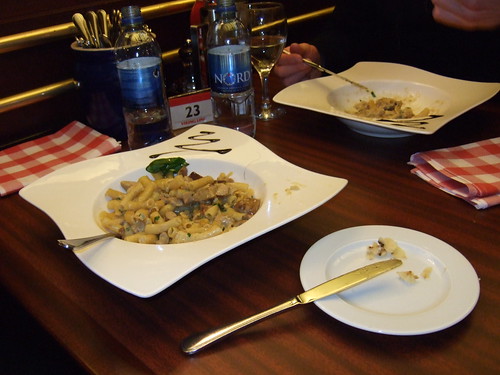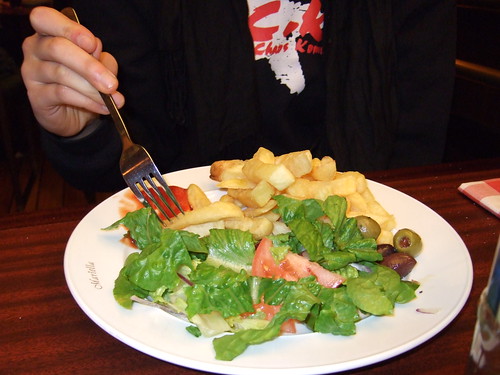Culture · Dominik Mayer · Products, Asia, Productivity
Nian
Every Chinese New Year, Apple commissions a short film.
This year it’s about the mythical Nian. Wikipedia explains:
Once every year at the beginning of Chinese New Year, the nian comes out of its hiding place to feed, mostly on men and animals. During winter, since food is sparse, he would go to the village. He would eat the crops and sometimes the villagers, mostly children. […] The weaknesses of the nian are purported to be a sensitivity to loud noises, fire, and a fear of the color red.
Hence the fireworks, noises and the red color everywhere. I remember riding my bike through Shanghai on Chinese New Year with things exploding left and right. It felt like crossing a battlefield.
Here’s the making-of video to the short film with director Lulu Wang and colleagues touting the iPhone 12 Pro Max as a cinema camera:
Colors
Stephen Anderson and Karl Fast in Figure It Out: Getting from Information to Understanding:
All cultures start with the ability to distinguish dark things from light things. This is followed by the recognition of red. After that, it might be the addition of yellow or green. And blue always seems to come last. Not every language follows the exact same path, but they adhere to this same general pattern.
One of the many odd things of the Vietnamese language is that both “blue” and “green” are “màu xanh”. In case you need to differentiate between the two you would add something like “of the sky” (màu xanh da trời) or “of the tree” (màu xanh lá cây).
I had one Vietnamese teacher that would mark the traffic light with “blue light” and the Korean presidential offices with “green house”.
Wabi-Sabi
Robyn Griggs Lawrence, author of Simply Imperfect: Revisiting the Wabi-Sabi House:
According to Japanese legend, a young man named Sen no Rikyu sought to learn the elaborate set of customs known as the Way of Tea. He went to tea-master Takeeno Joo, who tested the younger man by asking him to tend the garden. Rikyu cleaned up debris and raked the ground until it was perfect, then scrutinized the immaculate garden. Before presenting his work to the master, he shook a cherry tree, causing a few flowers to spill randomly onto the ground.
To this day, the Japanese revere Rikyu as one who understood to his very core a deep cultural thread known as wabi-sabi. Emerging in the 15th century as a reaction to the prevailing aesthetic of lavishness, ornamentation, and rich materials, wabi-sabi is the art of finding beauty in imperfection and profundity in earthiness, of revering authenticity above all.
Check out the Wikipedia article for more examples and some photos.
Origins of the V-Sign
Stephanie Burnett tries to find the origins of the omnipresent V-sign.
Beauty Around the World
Esther Honig sent her picture to artists from more than 25 countries, asking them to “make me beautiful”:
Below is a selection from the resulting images thus far. They are intriguing and insightful in their own right; each one is a reflection of both the personal and cultural concepts of beauty that pertain to their creator.
Temporarily Leaving Stockholm


This display in the Stockholm Metro says you should mind the gap between train and platform. I couldn’t take a picture of the one saying you should pull the emergency brake in case of an accident. But why would you do this if the train won’t stop.



M/S Mariella in Stockholm

Pasta aboard M/S Mariella. Our vegan refused to eat it because it contained cream. One-week vegan removed all the cheese and started eating before we knew about the cream.

What the vegan got instead. Not healthier but the poor little milk animal didn’t have to die for it. ;-)
Art
What is art? How can one define whether an artwork is good or bad and determine its worth?
First Snowflakes
First snowflakes were spotted in Cham. It’s high time to install my winter tires before I won’t be able to drive home anymore. So I’ll most likely miss the Lange Nacht der Museen (Long Night of Museums) tomorrow. :-(